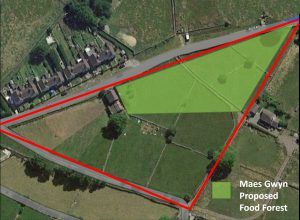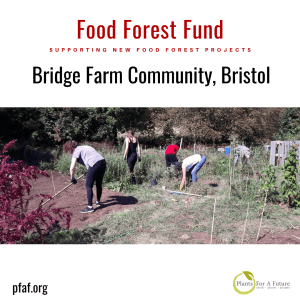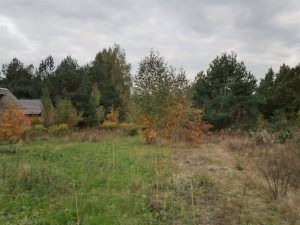On 23 July, Wendy, David and Chris went to Elder Farm near Wellington in Devon (https://www.elderfarm.co.uk/ ), as one of a series of visits for Plants For A Future. Elder Farm is a five and a half acre smallholding, one of three smallholdings on Greenham Reach, a 22 acre site which was the first to be bought by the Ecological Land Cooperative (ELC). We approached this farm on a hot dry day in July after many weeks without rain, down a narrow winding lane, still lush and green and almost impenetrable despite the drought, before we came to the wide open vista of Greenham Reach, with lovely views over surrounding farmland and woodland.
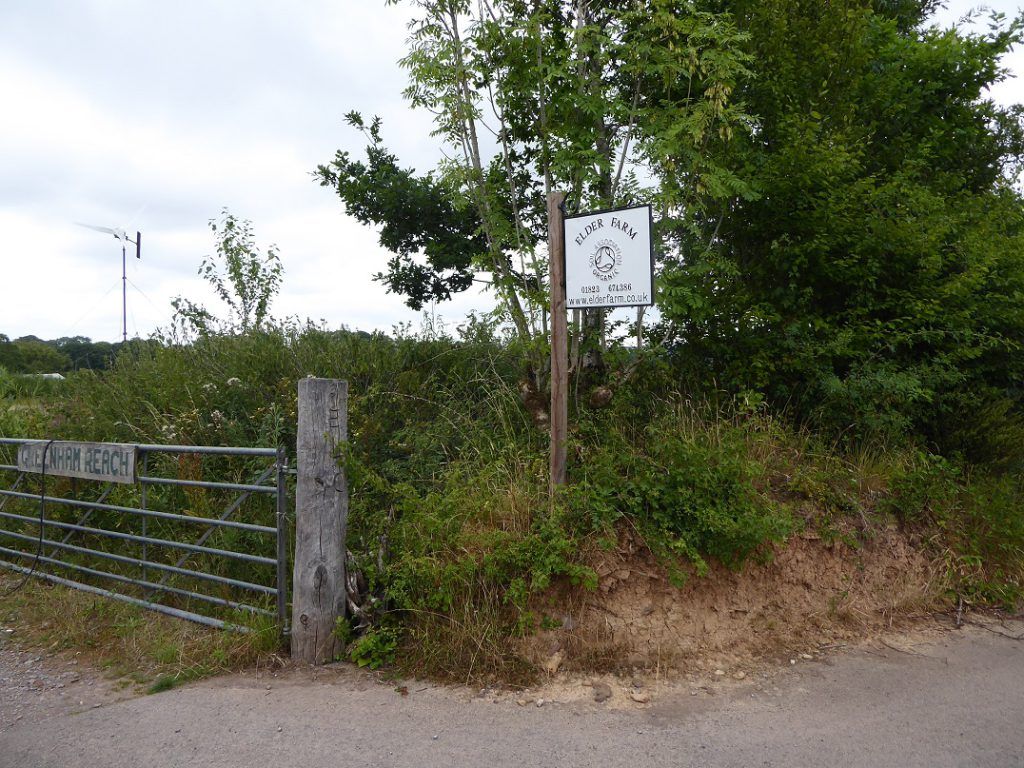
ELC is a social enterprise founded in 2011 whose mission is ‘to provide affordable opportunities for ecological land-based businesses in England and Wales [and to] support rural regeneration by developing affordable sites for farming, forestry and other rural enterprises which are viable and ecologically beneficial’. (http://ecologicalland.coop/ ) The story is described by ELC director Shaun Chamberlin: https://transitionnetwork.org/news-and-blog/shaun-chamberlin-on-the-ecological-land-coop/ .)
Helen and Stuart Kearney took on a lease to Elder Farm three years ago. They have a background in permaculture, cooperatives, organic growing and outdoor education. Helen is a qualified medical herbalist with practices in two nearby towns. At Elder Farm they grow herbs to make into medicines, soap and other herbal products. The site is planned on permaculture principles, and as well as the medicinal herb-growing, includes vegetables and edible and cut flowers, orchard and native woodland and wilderness, each zone of the land replete with new wind-break hedges and with old copses and hedgerows around. There are polytunnels for growing in cooler weather, barns and caravans for accommodation and teaching space for volunteer helpers (WOOFers) and students from the UK and abroad. The goal is to reconnect people to sustainable growing methods, and to the amazing healing power of plants.
Helen was our main informant on this visit, but clearly both this couple are committed to a way of life that nurtures the land, allows them to live lightly on the earth, and promotes the nearly forgotten art of healing ourselves with herbal remedies from our native plants. For example, dandelion, elder, and nettle, all easily grown here, have tended to be imported into this country from Eastern Europe, to make herbal remedies, because of cheaper labour costs there. This kind of unnecessary transport of plants is one of the tragedies of contemporary farming and trading, and making a stand for a different way of growing and fulfilling our needs more locally is what this couple are about. Their passion and hard work has meant that after only three years from their arrival at Greenham Reach, they are making a significant part of their living from the herbs they grow, the medicines made on site, the herbal medicine practice and teaching that Helen does, using the site and its produce in the process.
When we arrived at Elder Farm, we were met by Helen and Stuart, and Charlie, their highly energetic chocolate Labrador retriever, and some delightful ducks and chickens.
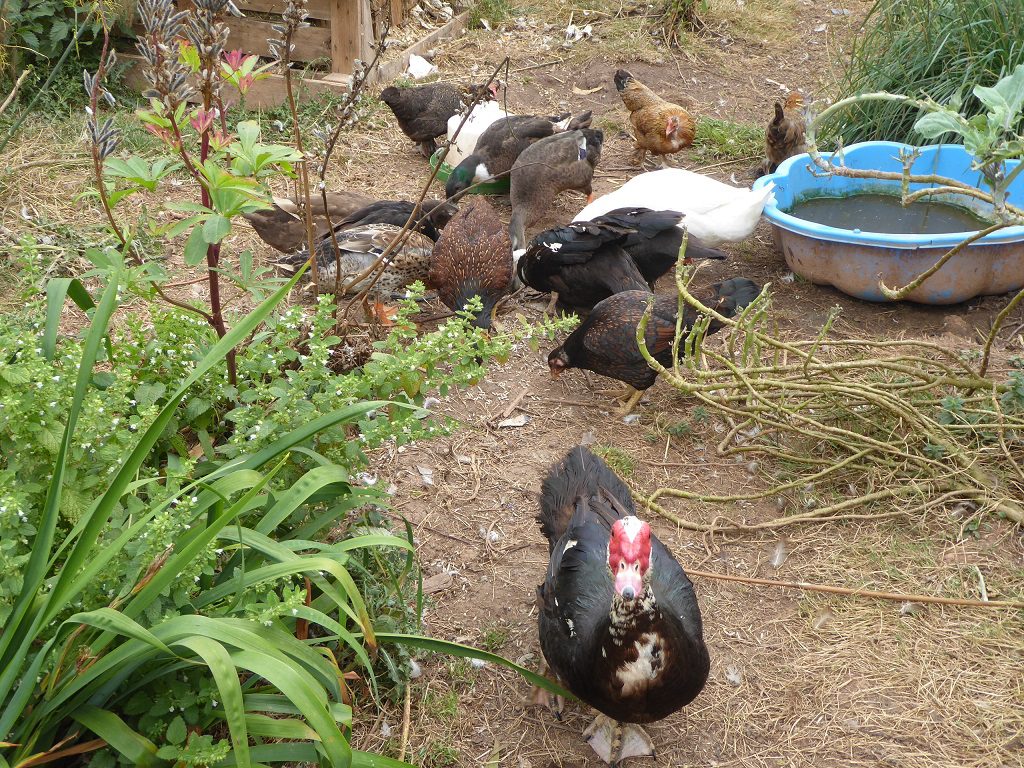
First of all we were taken to the teaching area for tea and delicious courgette and chocolate cake.
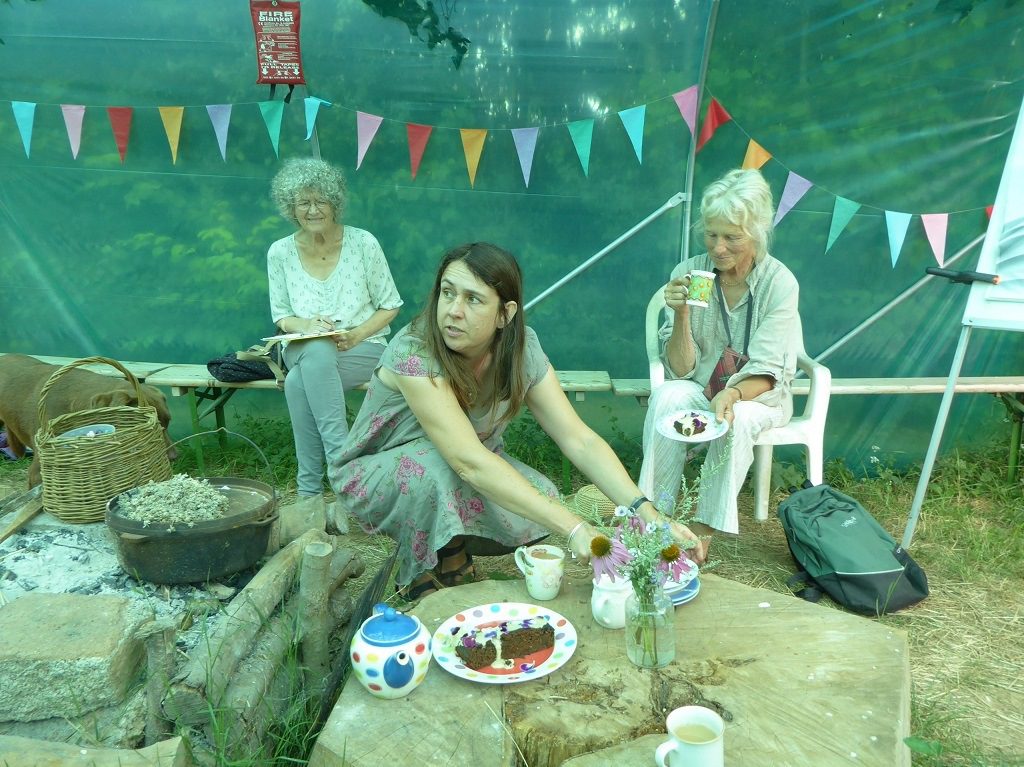
Chris, Helen and Wendy enjoying cake in the teaching area
We heard about where Helen and Stuart have got to in the process of negotiations over planning permission from Mid Devon District Council to stay permanently and be allowed to build a house. They have been living in a permanent caravan which is not very comfortable. It is cold in winter and very hot in the summer we are having, although they have added insulation and a porch. ELC had initially provided the site with a large wooden barn, and with 4Kw solar power generation and storage batteries, all shared by the three tenants.

Three of the eight lead acid storage batteries
In January 2018 a 1Kw wind turbine was also installed, placed at the highest point of the site. The farm is completely off grid. A lot of power has been needed to pump water up from a borehole for irrigating vulnerable plants in this long heatwave.
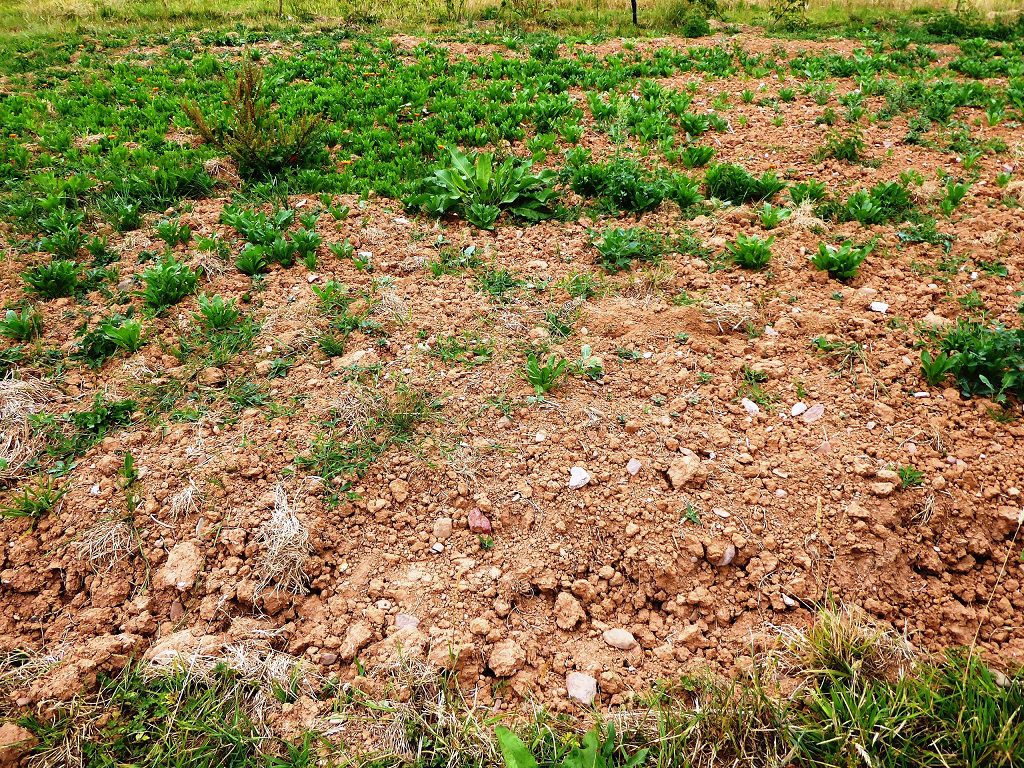
A patch of very dry soil, an unusual sight at Elder Farm
Helen and Stuart have added other structures including three polytunnels and a greenhouse. Helen has a drying room for the herbs and a dispensary for making up tinctures and other preparations in a static caravan. We picked up more information as Helen gave us a tour of the site.
Witch hazel, Hamamelis virginiana, (https://pfaf.org/user/Plant.aspx?LatinName=Hamamelis+virginiana ) is an important species for the medical herbalist and also has uses in the pharmaceutical and cosmetics industries. Most witch hazel used commercially comes from the US where it is grown in monoculture, clear felled and pulped. Helen graduated as a medical herbalist in 2012 which means she has the right to make her own medicines, and she has set up her own dispensary. As well as offering witch hazel as a treatment for patients in her clinic, Helen teaches its use and preparation in her courses, and is in discussions on a wholesale contract with other organic herb growers and traders. A hundred witch hazels have been planted at Elder Farm as part of a polyculture system. Witch hazel is a small deciduous shrub so it will form part of the understorey as the vegetation on the site matures.
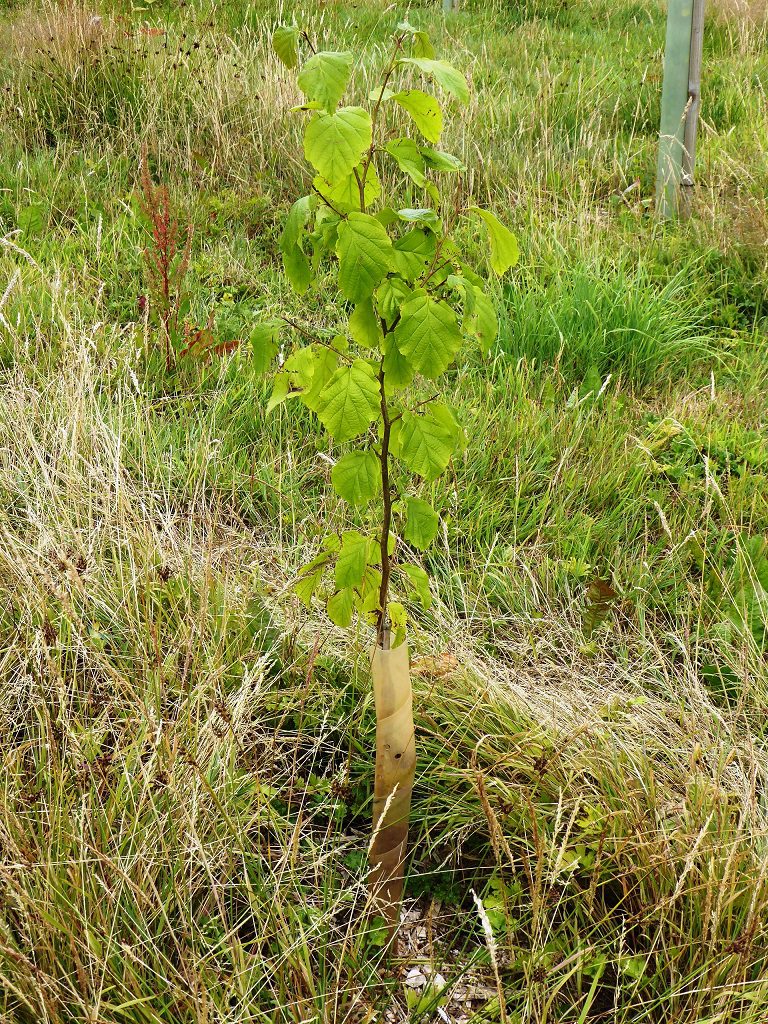
The witch hazels are interplanted with willow.
The witch hazels will be coppiced after 4 to 8 years growth.
Helen talked of the UK’s amazing history of herbal medicines which has almost been lost. As noted above, plants easily grown here are currently imported from the EU. The challenge is to work out how to get a fair price for herbs dried and sold in the UK. There are now 30 organisations, including the Soil Association, Lush and Weleda, discussing the logistics of how to pool yields and use appropriate technology. It is hoped that the post-Brexit landscape is going to change in ways that are better for the environment. Helen attended the Oxford Real Farming Conference in January this year and was impressed by what Environment Secretary Michael Gove had to say, which was very positive and solution orientated. (https://sustainablefoodtrust.org/articles/oxford-real-farming-conference-2018-the-times-they-are-a-changing/ )
According to the PFAF database entry, witch hazel is suitable for light (sandy) and medium (loamy) soils, prefers well-drained soil, neutral and basic (alkaline) soils, can grow in semi-shade (light woodland) or no shade, prefers moist soil. Helen told us that Elder Farm site is on marginal agricultural land which is normally very wet. Previously it was planted with maize, and heavy machinery compacted the soil. The bogginess was not evident during our visit because the soil was parched from the long heatwave. In uncultivated areas we were shown areas of soft rush, an invasive weed, which they have to dig out to improve bio-diversity.

Helen discovered permaculture by attending a course in 1997 led by George Sobol, PFAF trustee, and Patsy Garrard. She went on to gain her Permaculture Diploma, supervised by Patsy, and it was from an advert in Permaculture Magazine that she heard about ELC. So Helen was aware that the standard permaculture remedy for waterlogged land is to build swales and ditches on the contours, but she chose a simpler solution. This was to plant lines of trees 25 metres apart aligned North to South across the slope, at right angles to the established hedge on the site boundary providing a windbreak against north winds. They were given several standard apple trees and have placed them at the north end of each row.

One of the N-S lines of trees with a standard apple at the northern end
We were very impressed by how much has been achieved in three years. Helen told us that they started planting in March 2015 and all trees were in by March 2016. All the trees were mulched with cardboard and wood chip, then mulched again each year. Some trees were acquired via a grant from the Woodland Trust, and Helen mentioned that their standard advice is to use herbicide to kill the grass around young trees, which they didn’t adopt.
We saw an area designated for a vegetable garden, with rosa rugosa planted to form walls around the garden. (https://pfaf.org/user/plant.aspx?LatinName=Rosa+rugosa )
Part way round our tour we came to the site of the recently installed wind turbine.
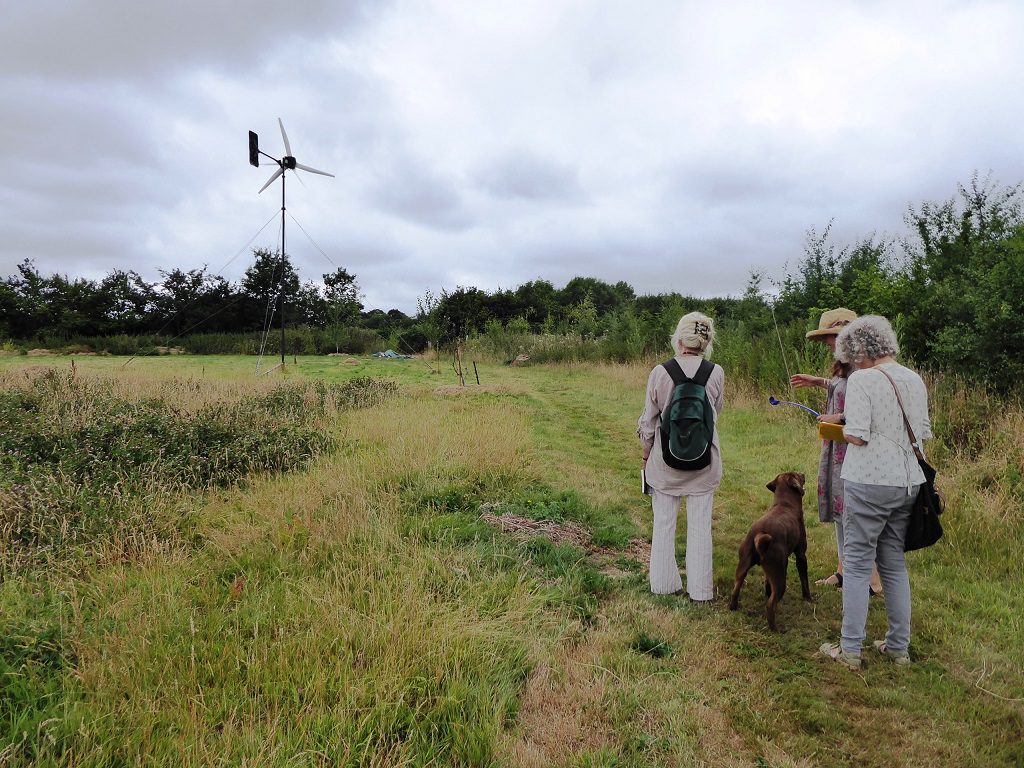
The wind turbine at the highest point of the site
There has to be a circle of 20 metres kept clear around the turbine to discourage birds and bats from feeding there, as they might be killed by the blades. So far there have been no fatalities. The blades revolve to face the wind and Helen said that it’s been noticeable that the normal prevailing SW wind has been largely absent since it was put up – an indication of the climate ‘not being right’.
We next saw another tree planting parallel to the boundary hedge.
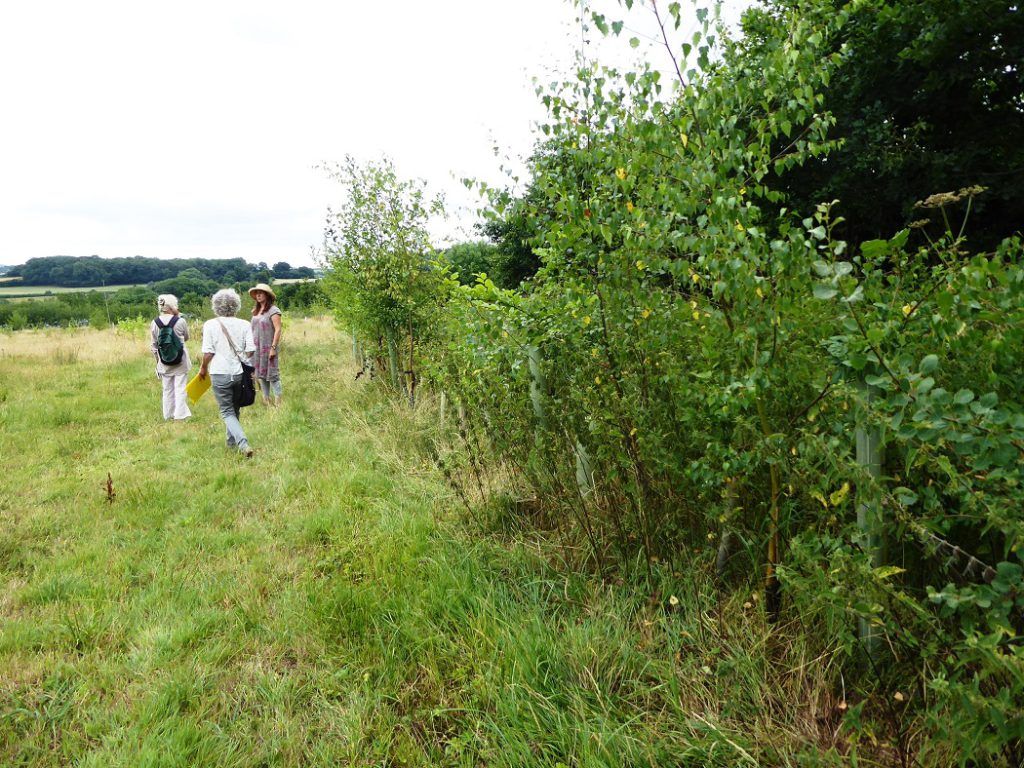
It was explained that the whole perimeter has to be accessible by any visitors so they can walk the site. The hedge was flail cut before they moved to the site. Now they use an Exmoor style hedgelaying, and use the trimmings as a dead hedge within the boundary. Trees of mixed species were planted inside that so that in time there will be a path between, a green lane. These trees have also been mulched twice. We saw eucalyptus with damage to the bark caused by deer. At that point, Charlie appeared chasing a small deer that had been asleep somewhere in the middle of the site. Helen told us that taking him around the site leaving his scent may deter the deer. We asked about rabbits and she said they are not a problem, except on one part of the site.
We passed an area of Zone 5 which is not managed, and where the rush is not removed.
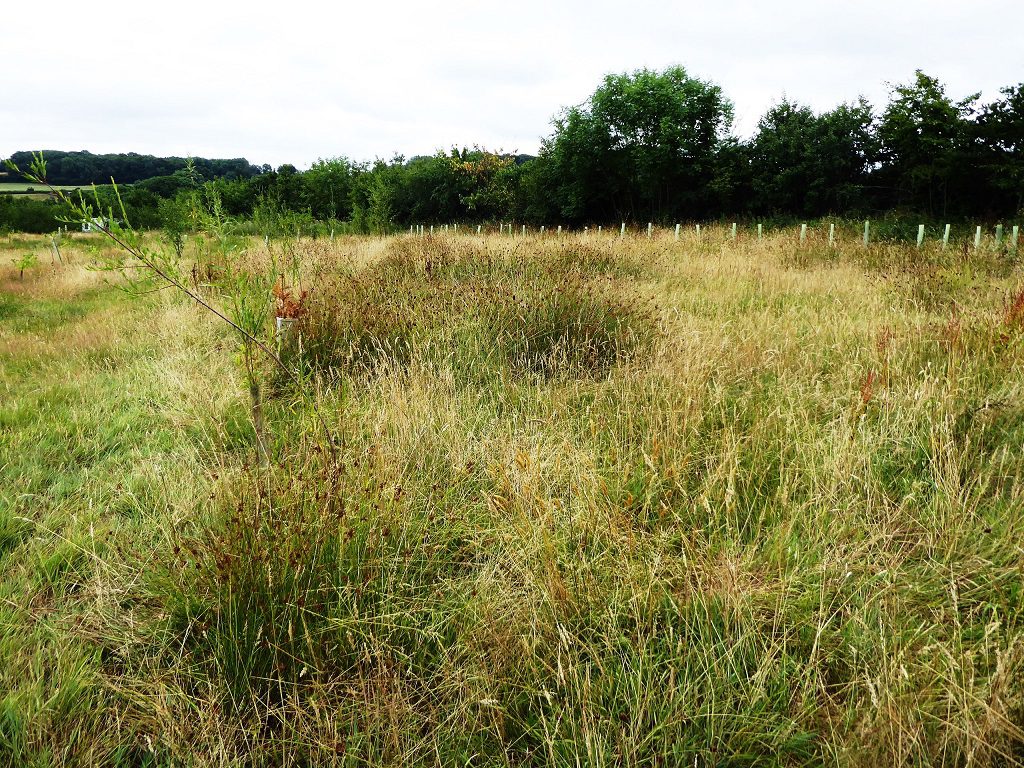
Helen remarked that in biodynamic systems there is a 5% rule for land being left wild.
A patch of willow has been planted as one of the ways to make up for the site having no trees. This is an important step towards self reliance as they do use firewood for space heating.
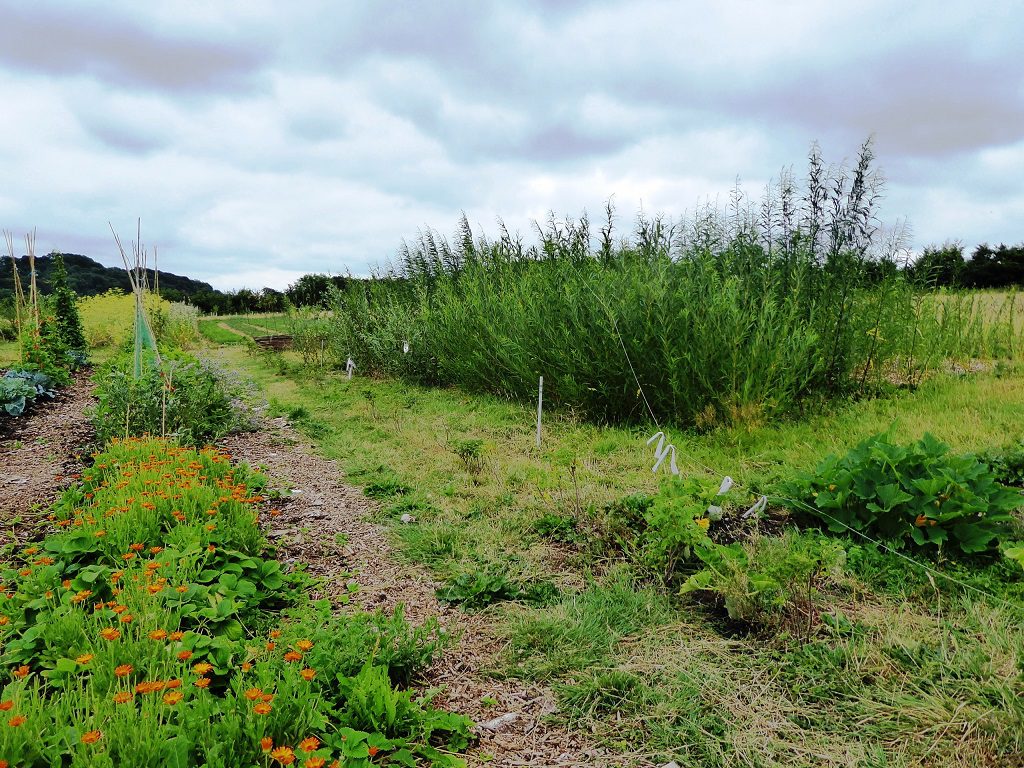
Two lines of willow saplings next to the kitchen garden
Helen and Stuart are trying as many things as possible to provide resources they need on site. Willow is used elsewhere for windbreaks and decorative fencing, including a plaited willow screen for the current living accommodation on the left.
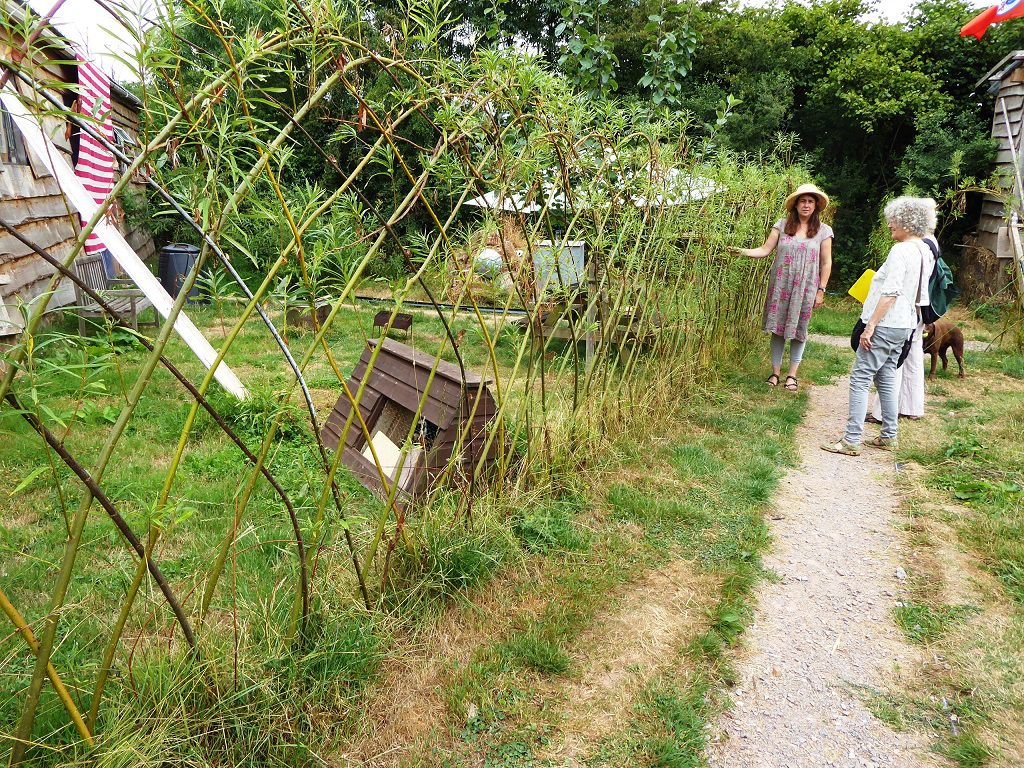
In another area of tree planting we saw a mixed species woodland
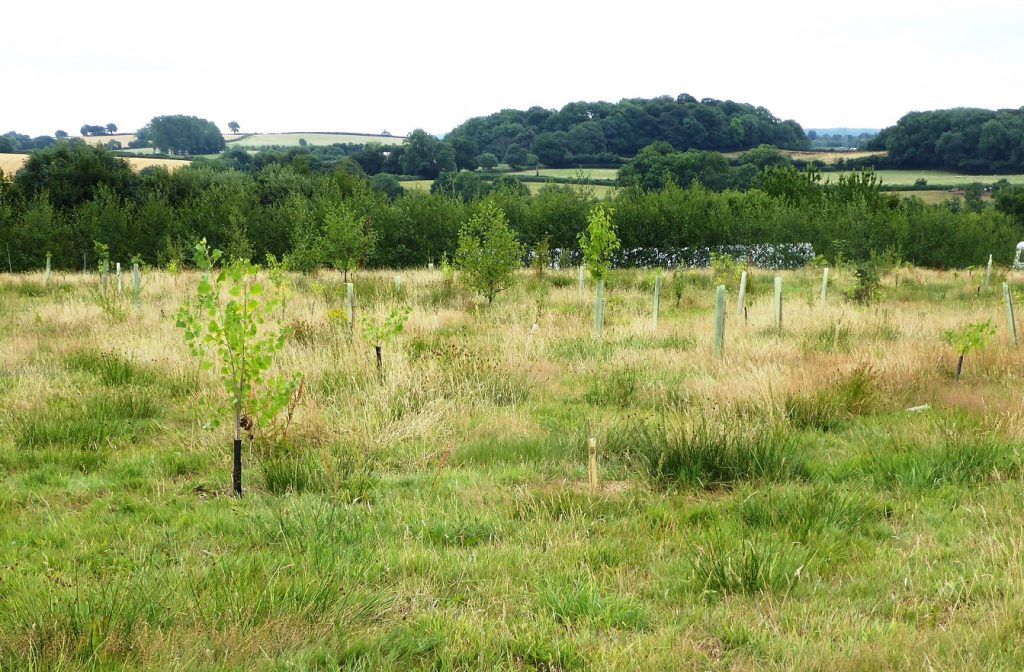
These three year old trees will grow to form a mixed woodland
English alders are doing well as they are wetland plants. (https://pfaf.org/user/Plant.aspx?LatinName=Alnus+glutinosa ) Birch is doing less well as it dislikes hot and dry conditions. (https://pfaf.org/user/Plant.aspx?LatinName=Betula+pendula ) There was also aspen in the mix. (https://pfaf.org/user/Plant.aspx?LatinName=Populus+tremula )
We next came to part of the site with beds and rows of individual species. There was a comfrey bed, a row of fennel, next to a row of marshmallow, a bed of skullcap, German camomile, thyme, hops, valerian, sweetcorn.
Fennel seeds have a medicinal use. The plants we saw were 2 years old.
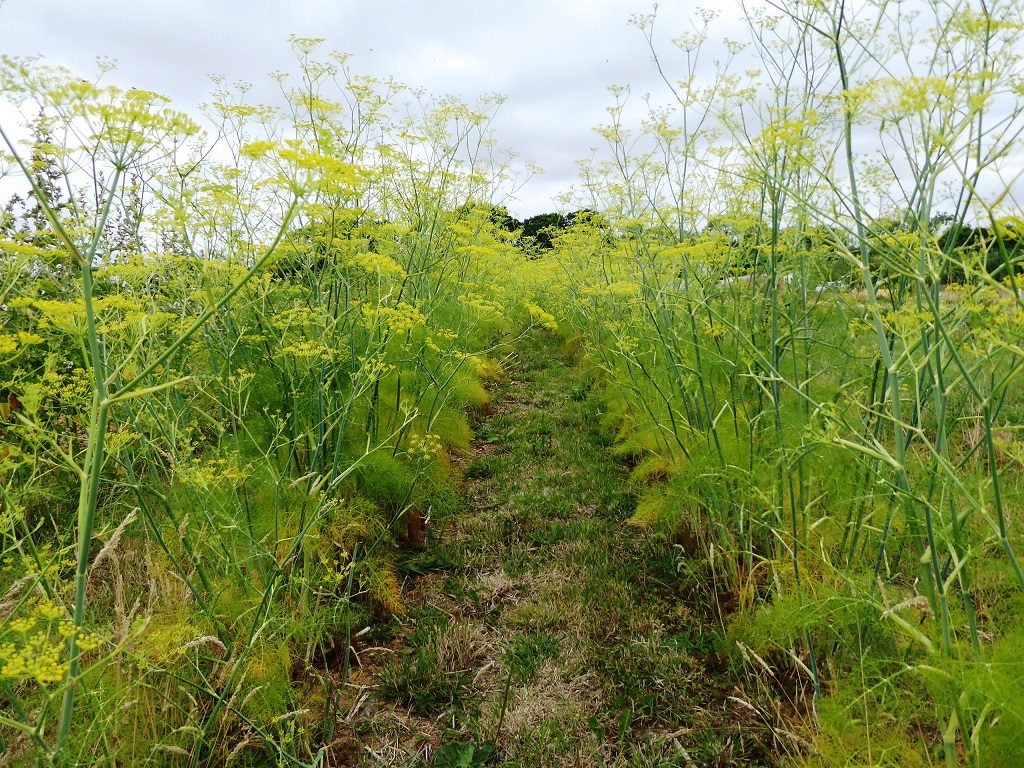
Fennel dies down each year and regrows. (https://pfaf.org/user/Plant.aspx?LatinName=foeniculum+vulgare )
Marshmallow is a valuable medicinal plant, with the flowers, leaves and roots having uses. (https://pfaf.org/user/Plant.aspx?LatinName=Althaea+officinalis ) Helen invited us to feel the leaves which are velvet soft. The plants are 2 years old, and after 3 years they will harvest the roots. Helen told us that marshmallow was over harvested by the Victorians.
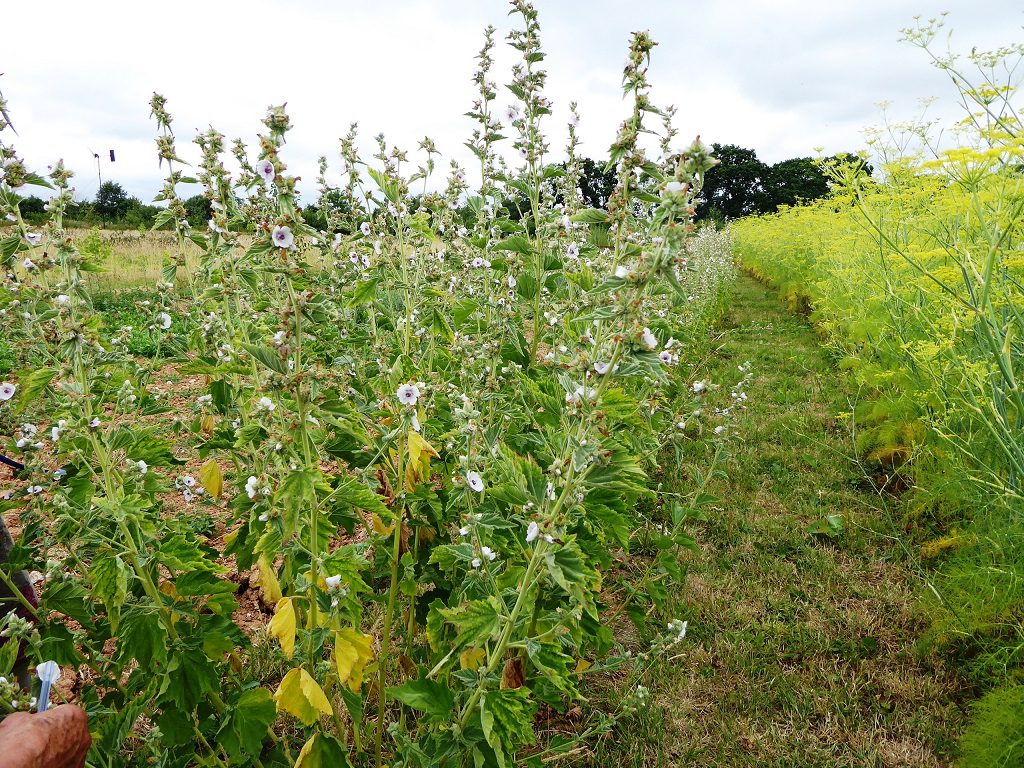
Another important herb grown on the farm is skullcap which is sold to a business down the road. Skullcap lateriflora has a blue flower which is used as treatment for nervous disorders. (https://pfaf.org/user/Plant.aspx?LatinName=Scutellaria+lateriflora )
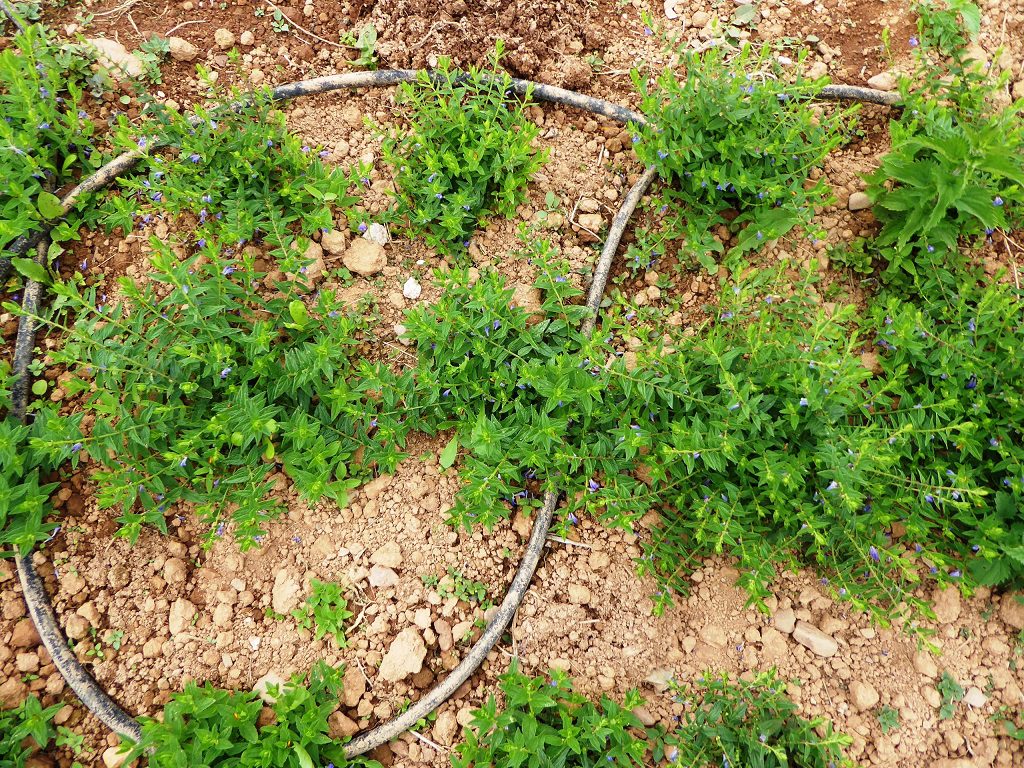
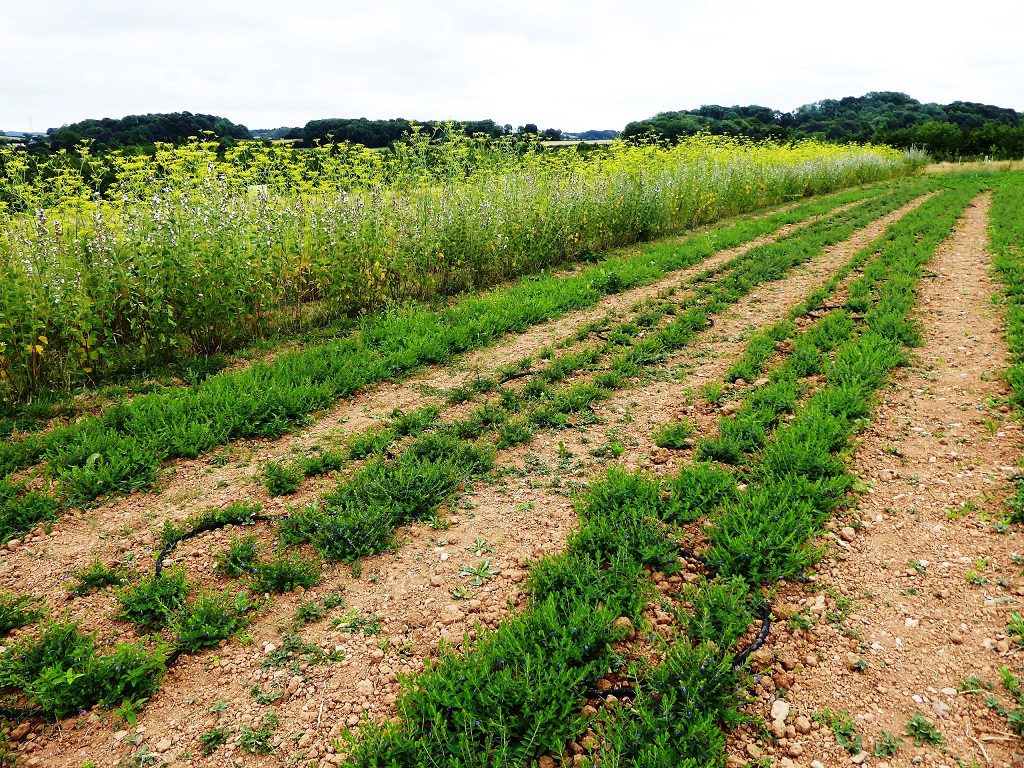
Lines of Scutellaria lateriflora next to the fennel
The bed has to be watered as it has been so dry. We were able to see the red Devon soil between the plants, which seems to have little humus, but Helen says is very fertile.
There was a bed of camomile, a well known herbal remedy. (https://pfaf.org/user/Plant.aspx?LatinName=Matricaria+recutita )
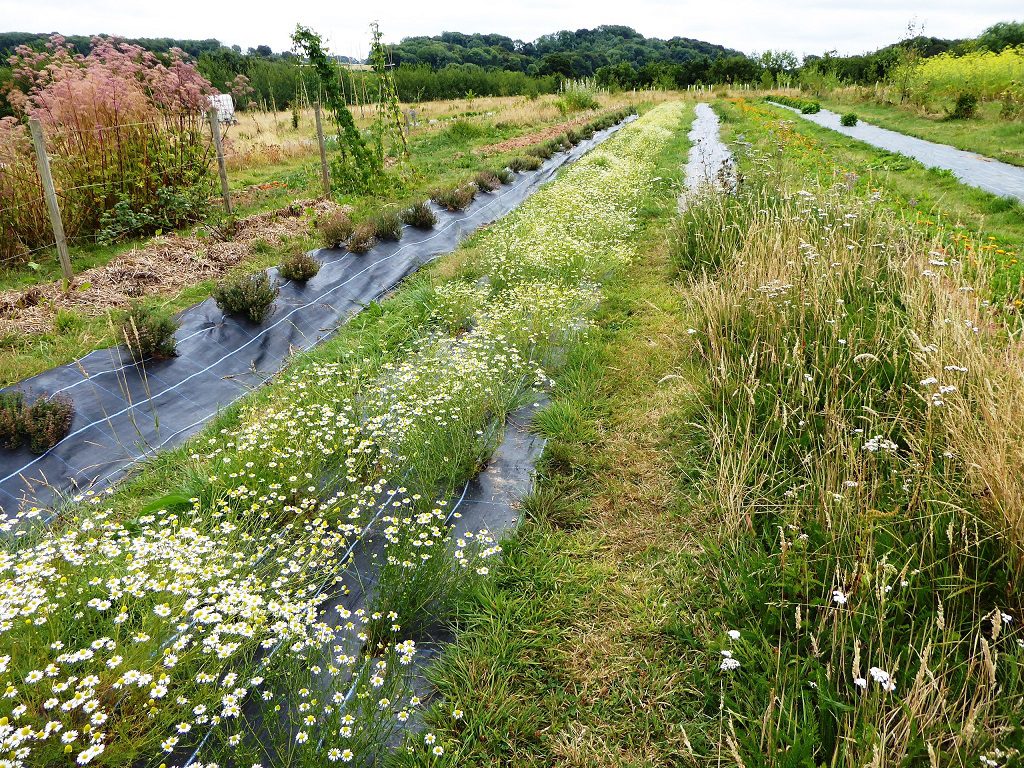
There was a row of valerian. (https://pfaf.org/USER/Plant.aspx?LatinName=Valeriana+officinalis )
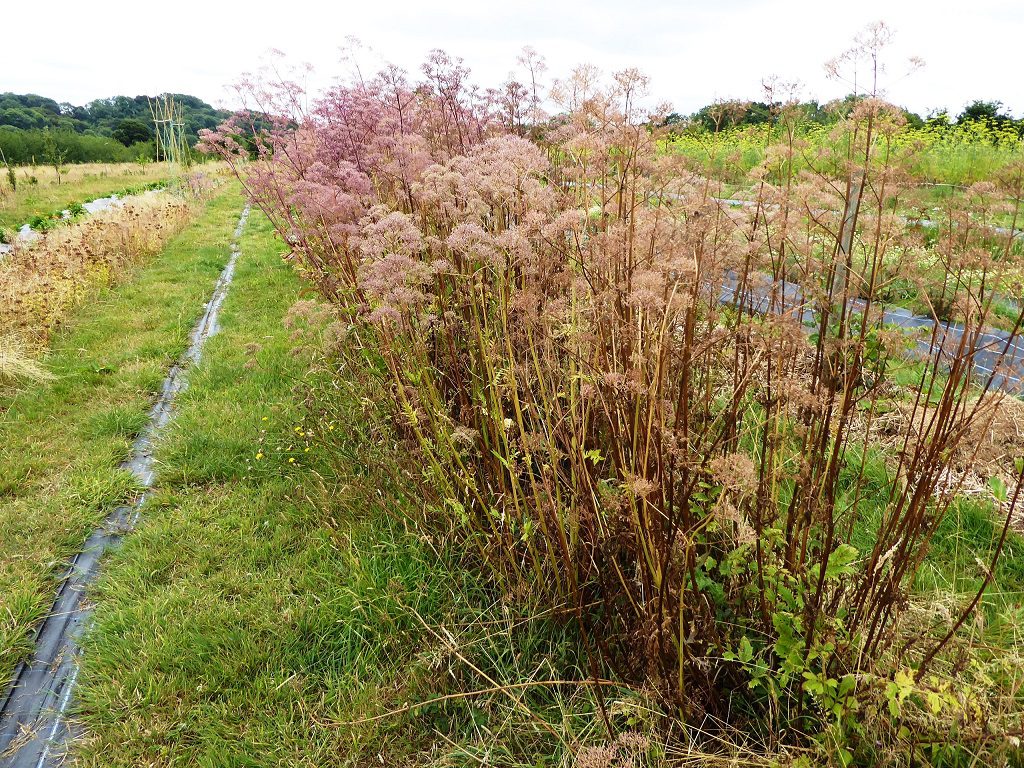
We saw row of thyme planted through plastic. (https://pfaf.org/User/plant.aspx?LatinName=Thymus+vulgaris ).
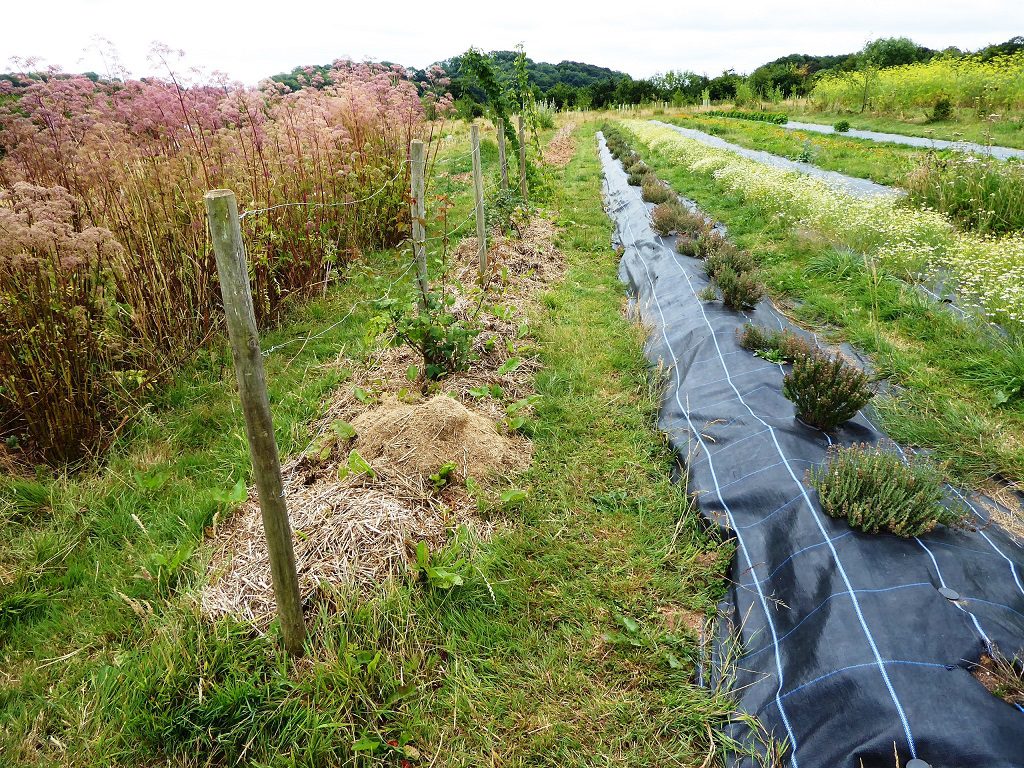
Next we had a look into the polytunnels, one for food growing, another for propagation, another has a greenhouse inside it, which they call the Eden Project.
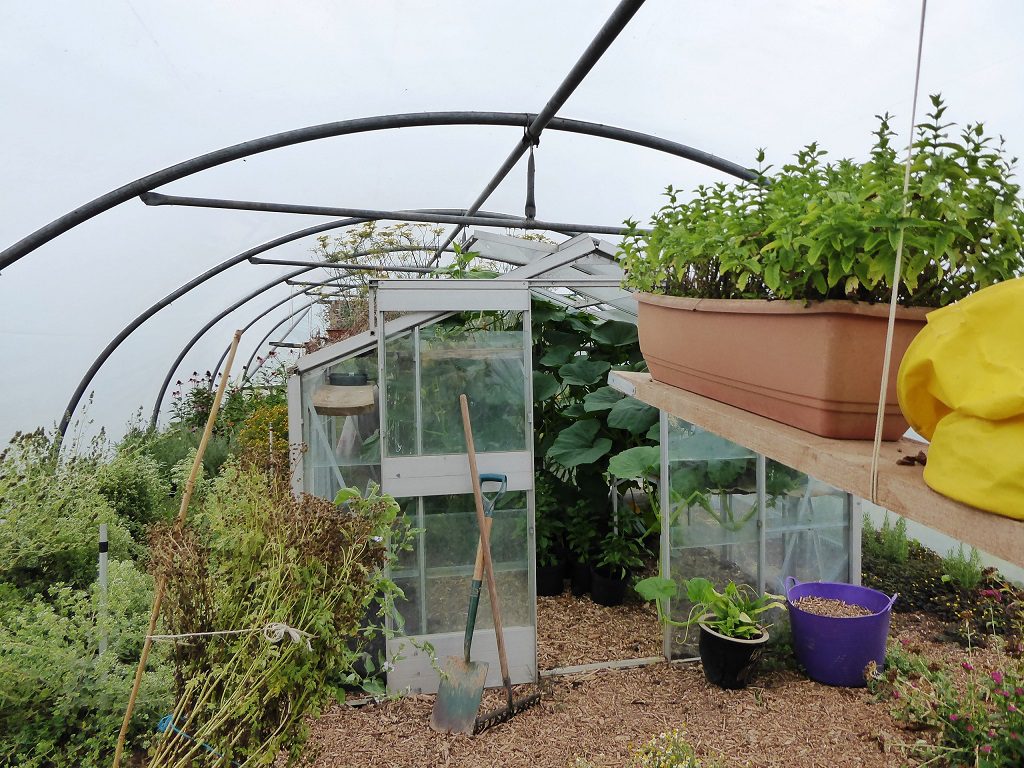
The greenhouse provides guaranteed heat and frost protection
In the polytunnels we saw many squashes, melons, chilies and globe artichokes.
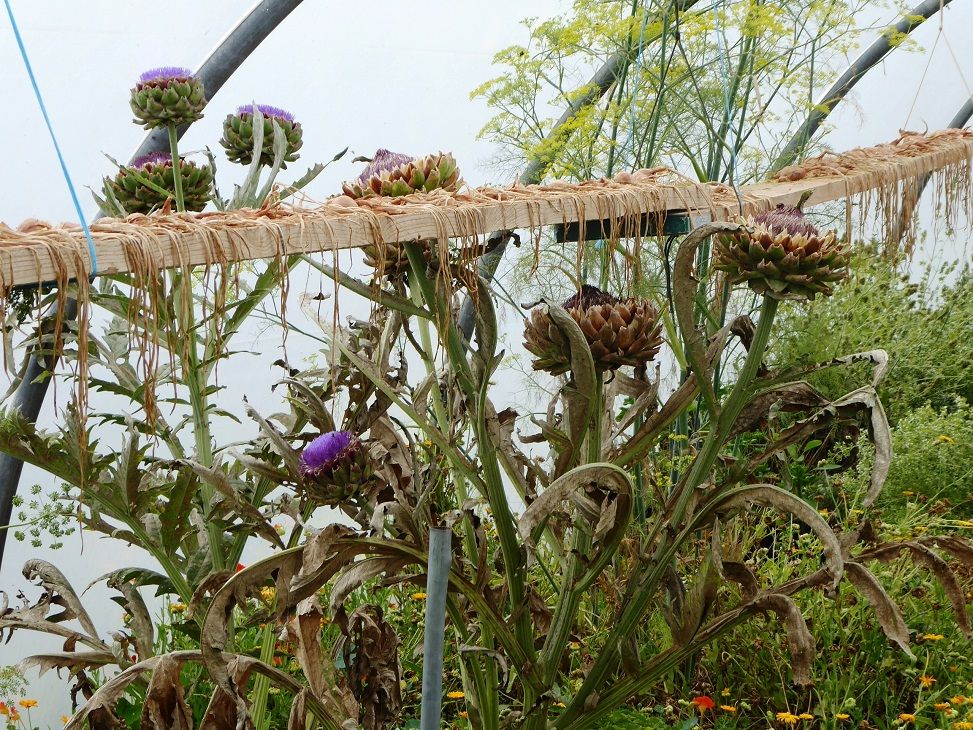
Artichokes are beautiful as well as good to eat
Sweetcorn is used medicinally especially the silks. (https://pfaf.org/user/Plant.aspx?LatinName=Zea+mays )
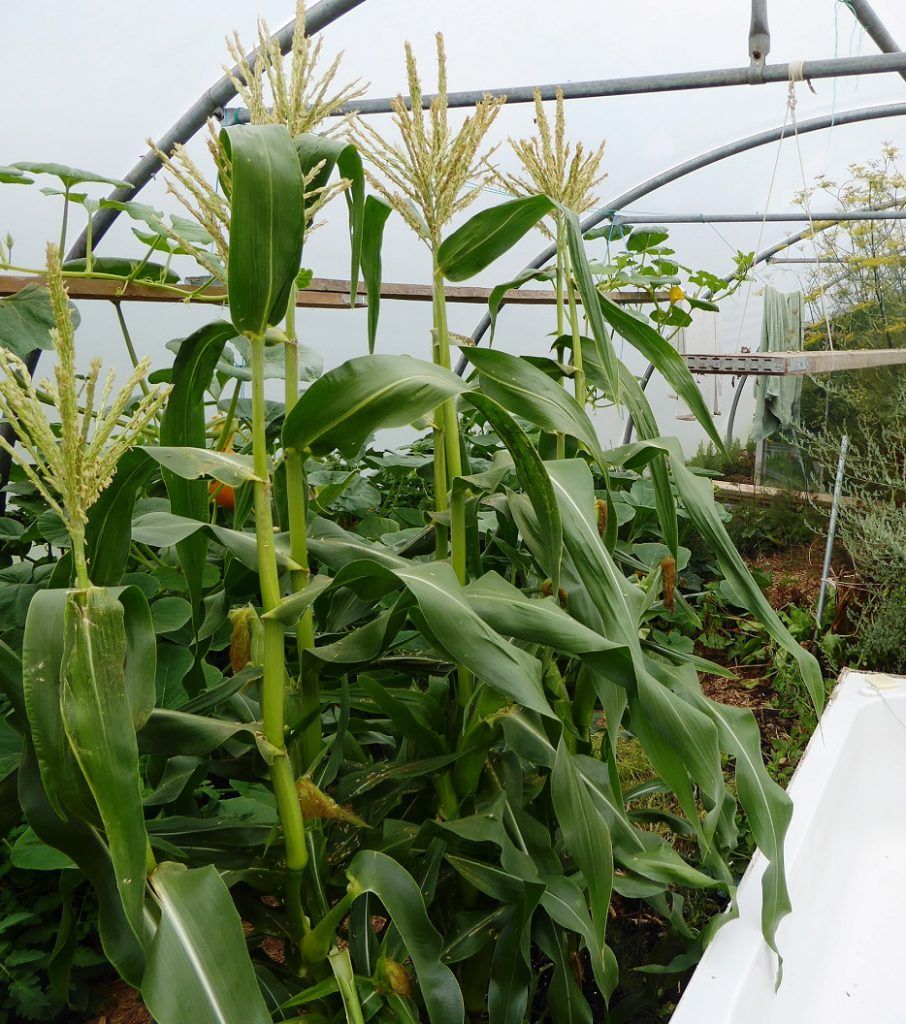
Outside there were trays of pots, some of which are for plants sales.
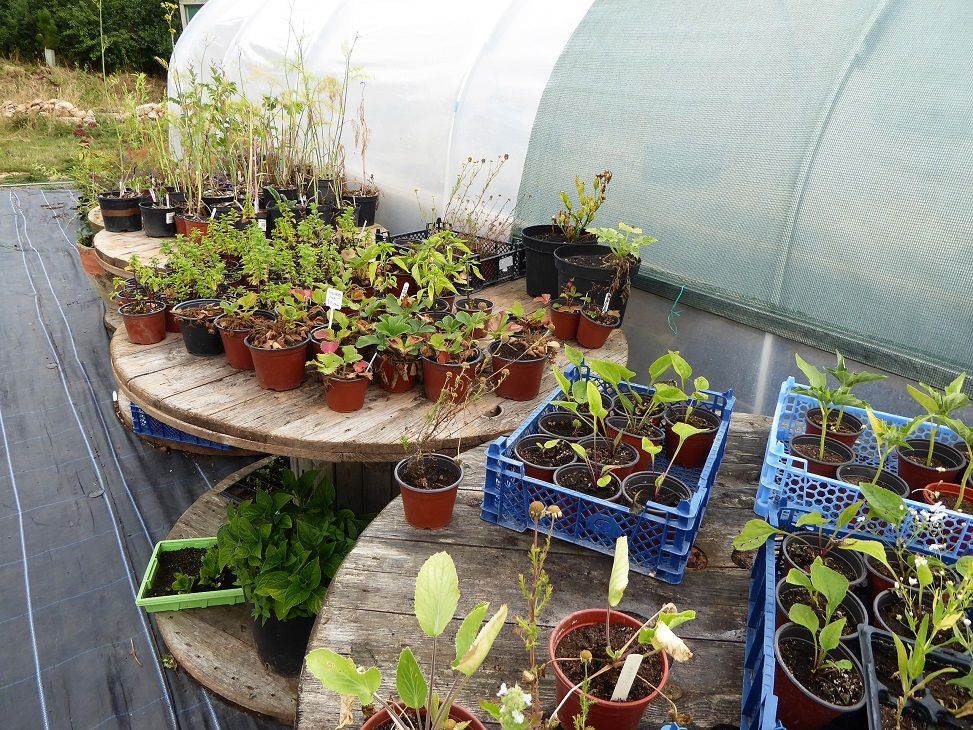
Our final visit was to the drying room in a static caravan.
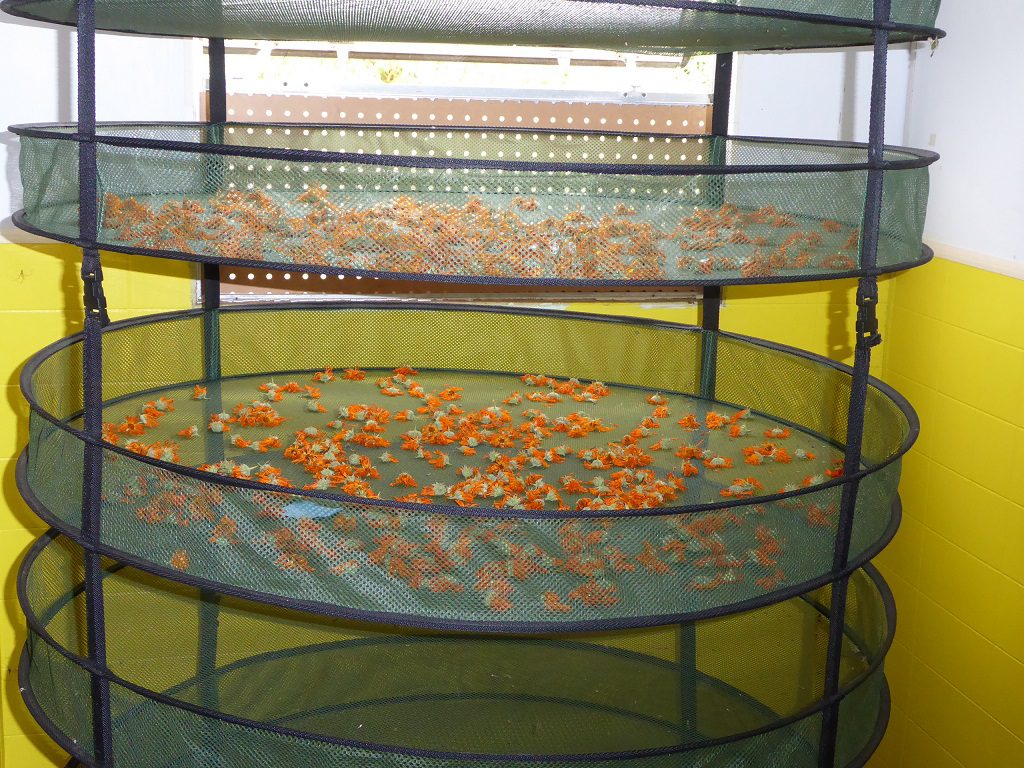
Calendula flowers being dried on gauze shelves
Then we were shown the dispensary with rows of bottles arranged alphabetically. Some with an Elder Farm label are tinctures Helen has made. Herbs such as camomile are steeped in 25% alcohol, have a long shelf life and are easily absorbed. They can also be mixed into a base cream.

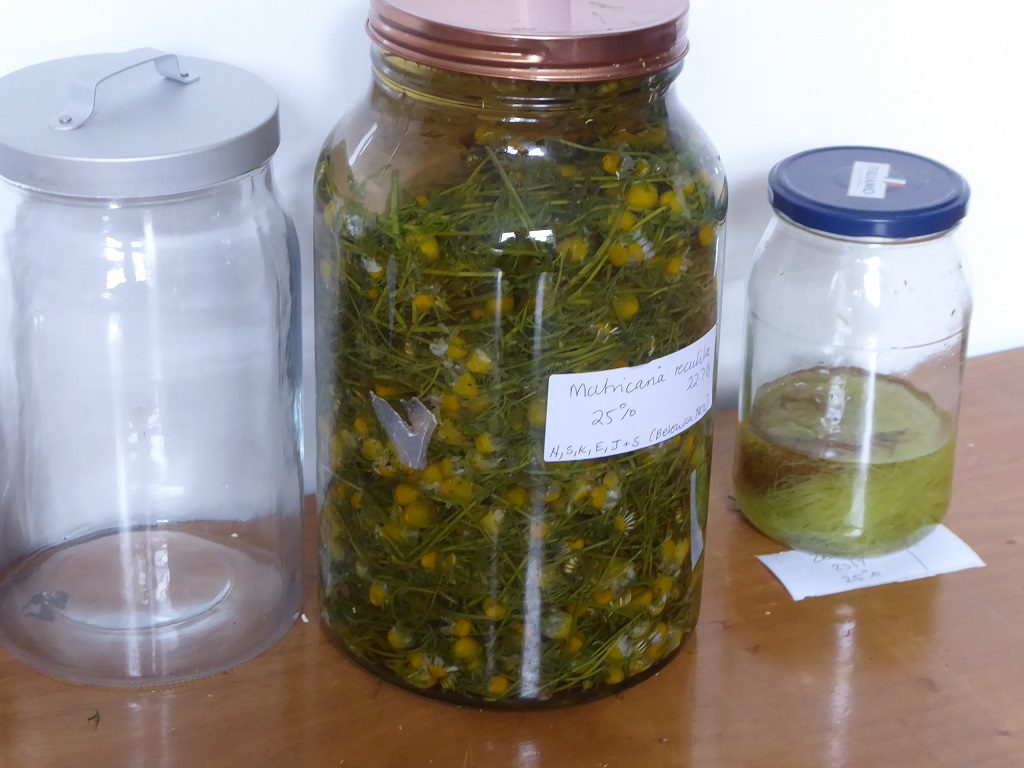
We were interested in what Helen told us about her work as a medical herbalist. Her qualification is similar to a medical degree. She takes someone’s case history, writes a prescription, sometime for several different tinctures. We asked if patients are ever referred to her by orthodox practitioners. She said that GPs are not allowed to advise a patient to go to a medical herbalist, but they may suggest reading a leaflet. Helen once worked as a herbalist in the dermatology department of Whipps Cross Hospital in north London (a herbalist called Alex Laird works there). Herbs are unpatentable because they have so many active constituents, and therefore not attractive to big business.
We asked what sorts of conditions she treats. She said they are often chronic long term conditions, suffered by patients their doctors have given up on. She treats shingles with hypericum applied topically. Also raised blood pressure, the nervous system, low mood, anxiety, digestive problems. Herbal medicine used to be taught to medical students but no longer.
Helen gives talks to groups such as the WI and gardening clubs, reminding people how people once knew how to treat things like coughs and colds, in the ‘bad old days’ before the NHS, which is vitally important, particularly for antibiotics.
We came away from this visit heartened by Helen and Stuart’s vision and the realisation of it on the ground, in their way of living and the beautiful and abundant small-holding, despite drought. We also admired Helen’s determination to restore the use of herbal medicines to its rightful place as part of what we all use for common seasonal and many chronic ailments, as another way of helping ourselves to live healthier lives more closely connected to the plant life around us.
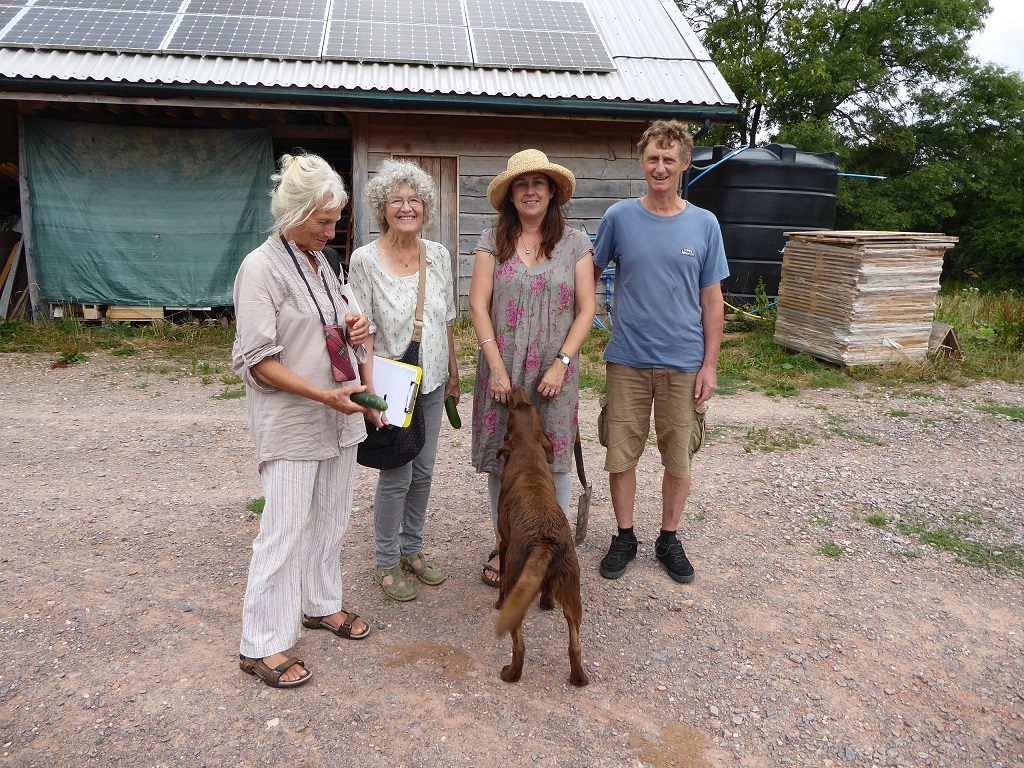
Wendy, Chris, Helen and Stuart (and Charlie) in front of the barn with solar panels and water storage tank


